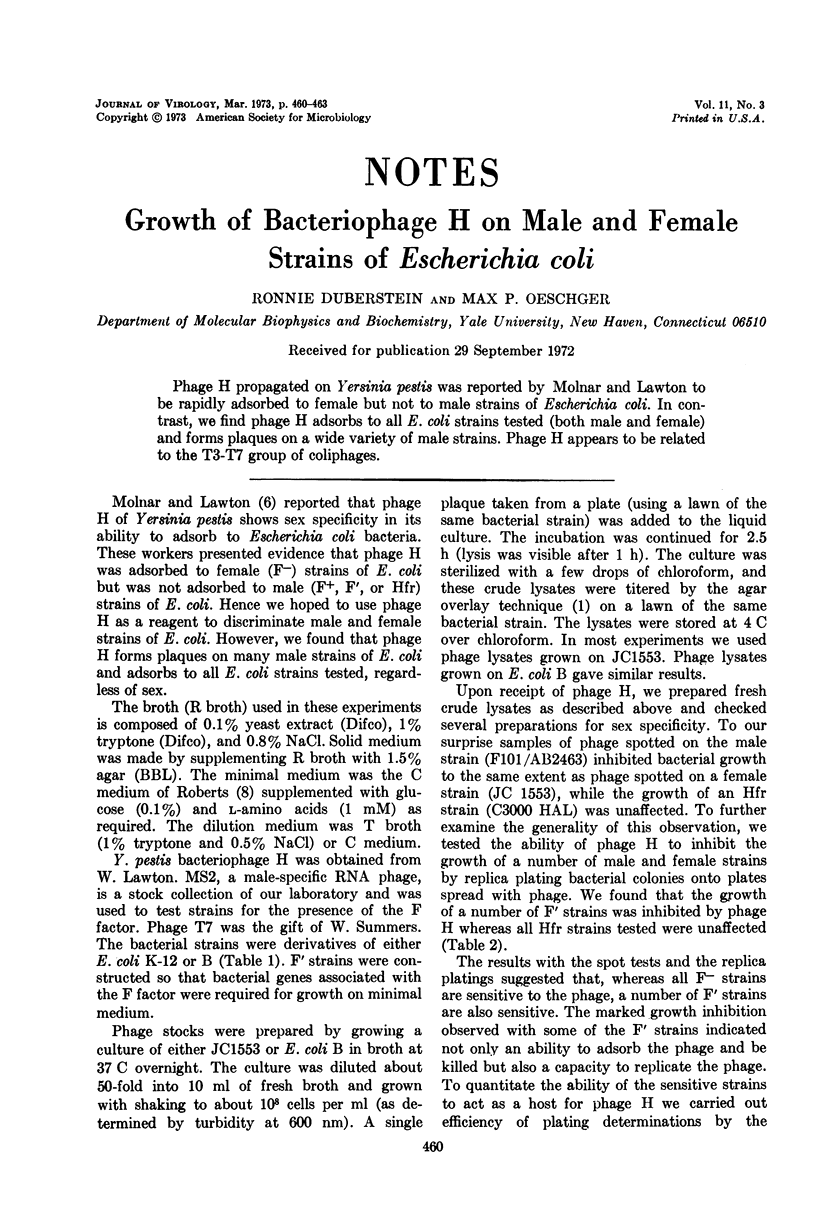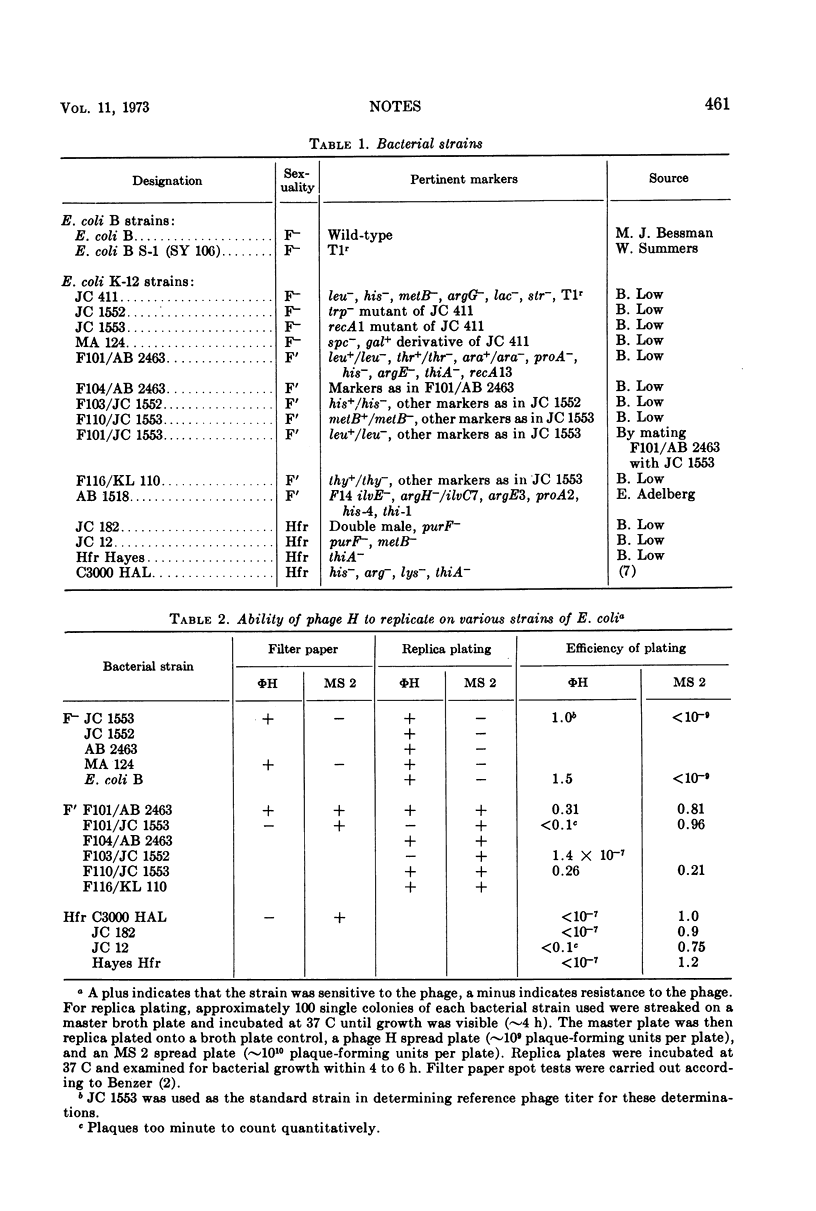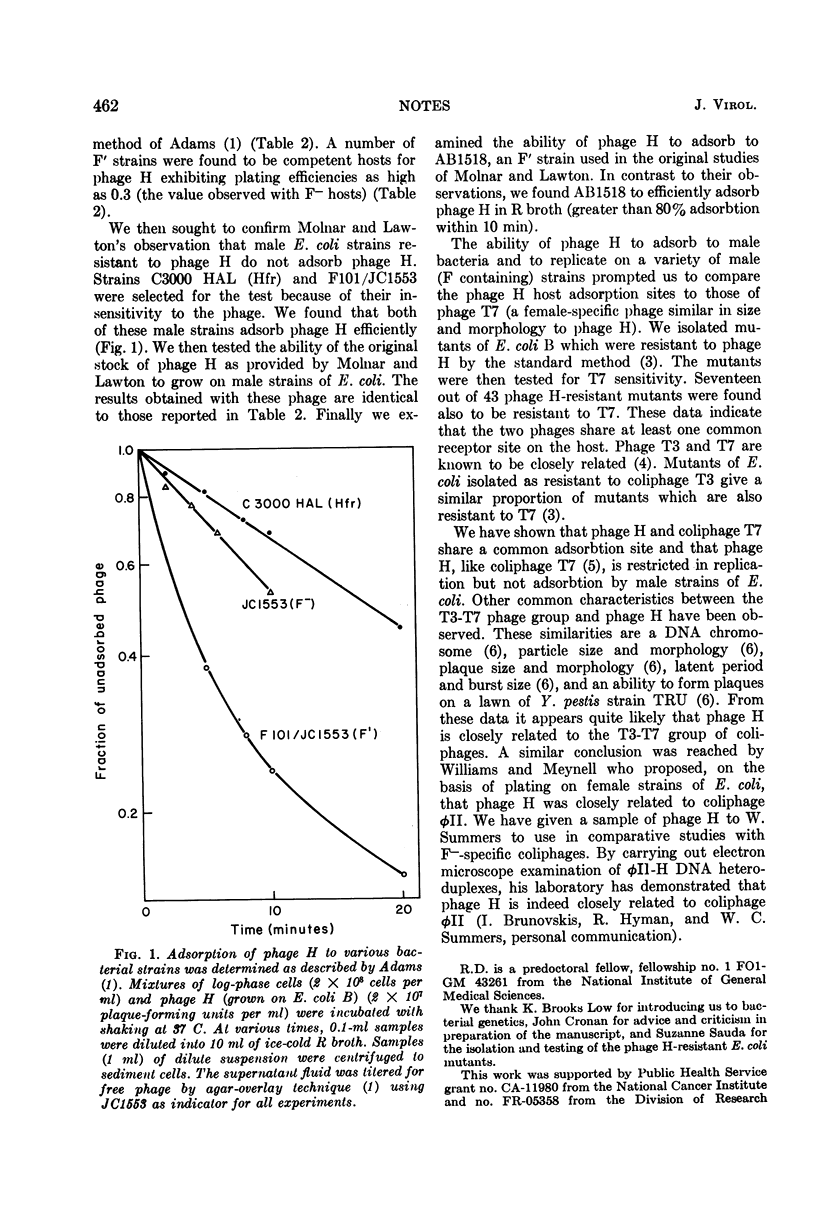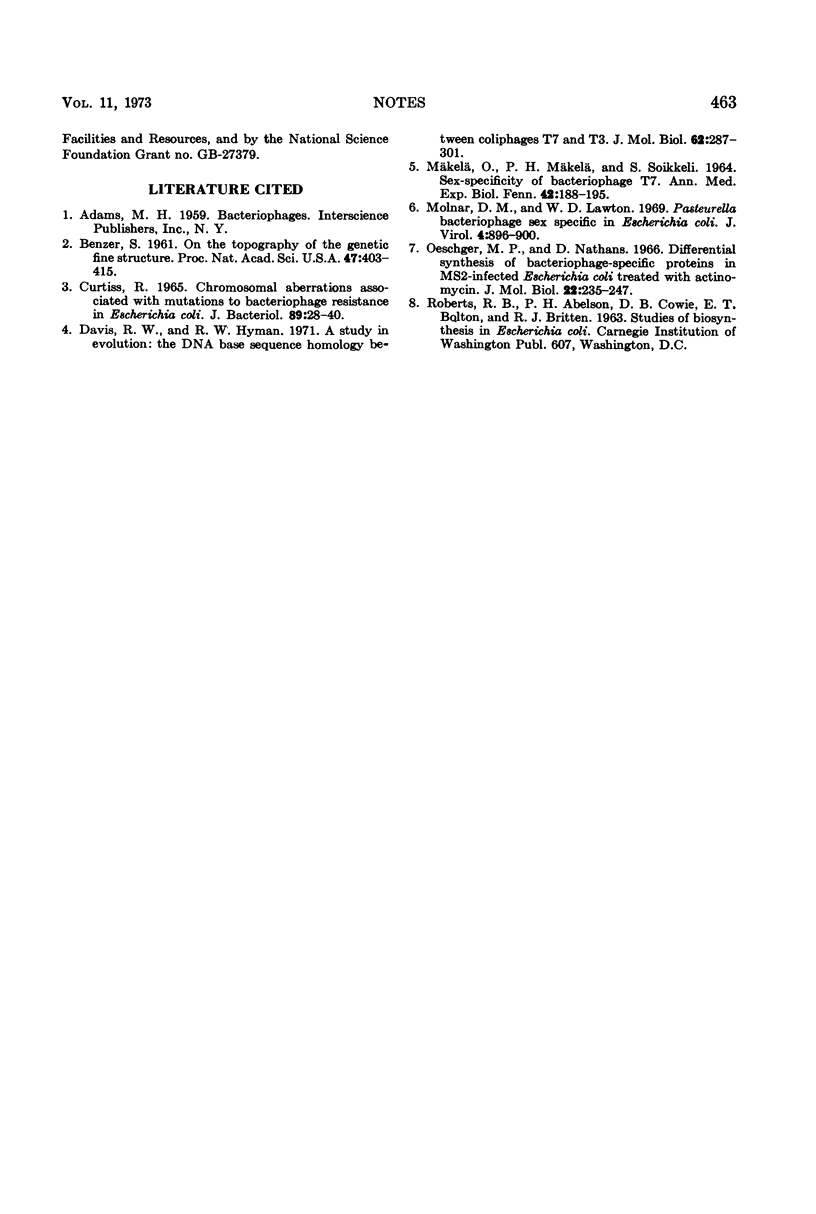Abstract
Phage H propagated on Yersinia pestis was reported by Molnar and Lawton to be rapidly adsorbed to female but not to male strains of Escherichia coli. In contrast, we find phage H adsorbs to all E. coli strains tested (both male and female) and forms plaques on a wide variety of male strains. Phage H appears to be related to the T3-T7 group of coliphages.
Full text
PDF



Selected References
These references are in PubMed. This may not be the complete list of references from this article.
- Benzer S. ON THE TOPOGRAPHY OF THE GENETIC FINE STRUCTURE. Proc Natl Acad Sci U S A. 1961 Mar;47(3):403–415. doi: 10.1073/pnas.47.3.403. [DOI] [PMC free article] [PubMed] [Google Scholar]
- CURTIS S. R., 3rd CHROMOSOMAL ABERRATIONS ASSOCIATED WITH MUTATIONS TO BACTERIOPHAGE RESISTANCE IN ESCHERICHIA COLI. J Bacteriol. 1965 Jan;89:28–40. doi: 10.1128/jb.89.1.28-40.1965. [DOI] [PMC free article] [PubMed] [Google Scholar]
- Davis R. W., Hyman R. W. A study in evolution: the DNA base sequence homology between coliphages T7 and T3. J Mol Biol. 1971 Dec 14;62(2):287–301. doi: 10.1016/0022-2836(71)90428-1. [DOI] [PubMed] [Google Scholar]
- MAEKELAE O., MAEKELAE P. H., SOIKKELI S. SEX-SPECIFICITY OF THE BACTERIOPHAGE T7. Ann Med Exp Biol Fenn. 1964;42:188–195. [PubMed] [Google Scholar]
- Molnar D. M., Lawton W. D. Pasteurella Bacteriophage Sex Specific in Escherichia coli. J Virol. 1969 Dec;4(6):896–900. doi: 10.1128/jvi.4.6.896-900.1969. [DOI] [PMC free article] [PubMed] [Google Scholar]
- Oeschger M. P., Nathans D. Differential synthesis of bacteriophage-specific proteins in MS2-infected Escherichia coli treated with actinomycin. J Mol Biol. 1966 Dec 28;22(2):235–247. doi: 10.1016/0022-2836(66)90129-x. [DOI] [PubMed] [Google Scholar]


